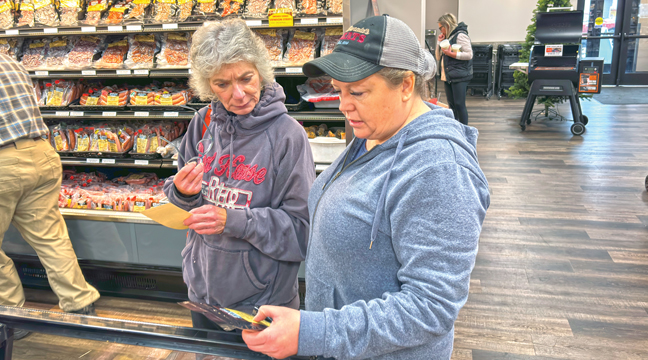About 30 Sherburne County area stakeholders gathered at the Sherburne History Center Monday to take part in the first of a series of meetings about strategies to obtain federal money for regional economic development.
Sherburne County has partnered with Central Minnesota Jobs and Training Services (CMJTS), the Federal EDA, Xcel Energy and the Initiative Foundation to create a Comprehensive Economic Development Strategy (CEDS) for the 7W district.
The partnership also includes Benton, Stearns and Wright counties and will greatly increase the chances of receiving future Federal EDA project dollars.
A CEDS is designed to bring together the public and private sectors in the creation of an economic roadmap to diversify and strengthen regional economies. It includes four cornerstones under which community conversations will occur: human capital, economic competitiveness, community resources and foundational assets.
Monday’s meeting was facilitated by CMJTS’s new Economic Development Coordinator, Jennifer Russell and focused on the strengths and weaknesses in Sherburne County and what projects could be done to make improvements.
After a demographic report by Luke Greiner of DEED, Russell asked those in attendance to list some strong points about the county. Some of those included having a younger and educated population, good transportation corridors, a supply of manufacturing jobs, access to medical facilities and lots of land to grow.
Weaknesses included the lack of reliable broadband, the need for more job training, lack of affordable housing, lower wages and a poor network of mass transit.
When the lists were complete, Russell asked the group to break into smaller groups and brainstorm about projects.
“Obviously we’re not going to solve anything here today, but the whole point of this is to focus on our weaknesses and try to come up with some strategies to work on this stuff” she said, “things we can do as a county and as cities and develop some projects that can go into the CEDS plan. The point is to get projects funded through the federal EDA.”
Russell said types of projects that have been funded in the past were wastewater treatment plants, medical facilities and industrial park expansions and upgrades. Her last project was a $3.5 million hospital in Sandstone.
When the groups were finished with their discussion, Russell asked for each group’s top projects, which were listed on a bulletin board. Some of the top vote-getters were creating a youth apprenticeship program, developing broadband, implementing a youth mentorship program and attracting immigrant workers.
Russell said the top strategies will be included in a report along with strategies from the other counties.
The reports will incorporate each county’s strategies, regional data, and goals into the CEDS plan for the QUAD-county region.
Russell said she expects to have four meetings with each county in the first few months of 2017, then have a CEDS plan by the end of the year.
That plan will be used to apply for Federal EDA money.









